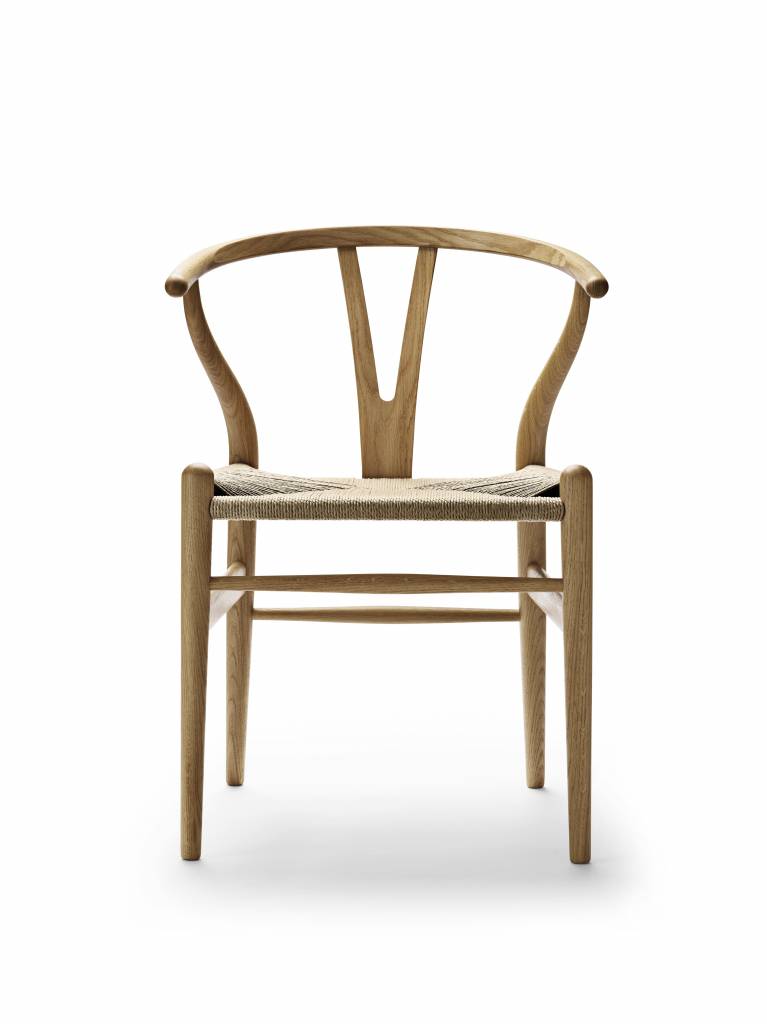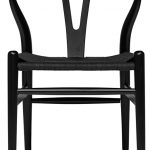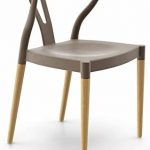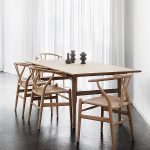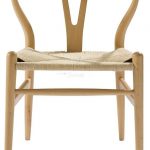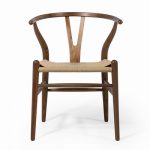The CH24 chair, commonly known as the Wishbone chair or Y chair, is one of the most famous and successful designs by Hans J. Wegner. It perfectly embodies the principles of Scandinavian design. It’s simple, appealing, functional and made from sustainable resources. Therefore, the Wishbone Chair became an archetype of Nordic furniture design.
story
Hans J. Wegner, nicknamed “The Master of the Chair”, designed the Wishbone chair. It was his great passion for chair design that eventually made Wegner a legendary figure in Danish modernism and a world-famous furniture designer. He created more than 500 chairs, many of which went into mass production. His outstanding work helped establish his home country as the international market leader for modern design. The Wishbone Chair comes from the time when Wegner was inspired for his designs by classic portraits of Danish merchants who sat on the antique Ming chairs. The first Wishbone chair hit the spotlight in 1949. It was specially developed for the furniture company Carl Hansen & Son as a lightweight, sculptural replacement for the heavy, fully upholstered dining room chairs popular at the time. The chair has been produced continuously since 1950.
design
The design of the Wishbone Chair has been reduced to the essentials, which means that the shape of the chair is very minimalist and pure. Its design embodies the famous credo of its creator: “A chair should not have a rear view. It should be beautiful from all angles and angles. “Indeed, with its famous organic shape, the chair is very appealing and stylish from every angle. To this day, its design remains true to Wegner’s original sketches and drawings. Light, attractive and comfortable dining room chair that speaks for itself of everyday containment. He feels is just as modern today as it was half a century ago. An excellent example of Wegner’s constant pursuit of organic simplicity in order to create sculptural beauty, comfort and outstanding stability. The Wishbone Chair is further proof that Hans J. Wegner in his time Was way ahead in terms of the design of wooden furniture. The minimalist and uncomplicated appearance of the chair can lead one to believe that it is relatively easy to manufacture, which is very far from the truth. Due to the use of the steam bent solid wood components, the chair requires flawless Craftsmanship and a thorough understanding nis of woodworking. The manufacturing process requires a hundred-step revision by skilled artisans to bring this classic to life. The chair was mainly designed to allow comfortable sitting in the dining area.
The high level of comfort is due to the hand-woven seat shell. It uses 120 meters of paper twine in its manufacture, a permanent substitute for jute that was developed during World War II. The seat shell is available in the natural beige color or can be painted black. The chair stands on four cylindrical wooden legs, which are spanned with dowels at the front and back and rectangular slats on the sides. All four legs are slightly tapered at the bottom. The front legs are rounded at the top to avoid sharp corners. The curvy, steam-bent rear legs match the upper part of the backrest. It is made from a solid piece of wood that is steam bent into its characteristic rounded shape and adheres far enough to support the arms. Perhaps the most distinctive feature of the chair is the Y-shaped central component of the backrest, hence the name of the chair: “The Wishbone Chair” or “The Y-Chair”. The chair uses high quality natural materials and is designed to last for generations. Customers can choose from different types of wood, including beech, ash, maple, oak, cherry and walnut, as well as surfaces such as soap, oil or lacquer. The latter is available in a variety of different colors.
The elegant, sublime design, combined with the impeccable quality of craftsmanship, has given the chair a very special place in the history of interior design. This timeless piece of furniture still looks fresh and appealing and is a great, tasteful addition to any modern interior.
 decorafit.com Design ideas for your home and patio
decorafit.com Design ideas for your home and patio
